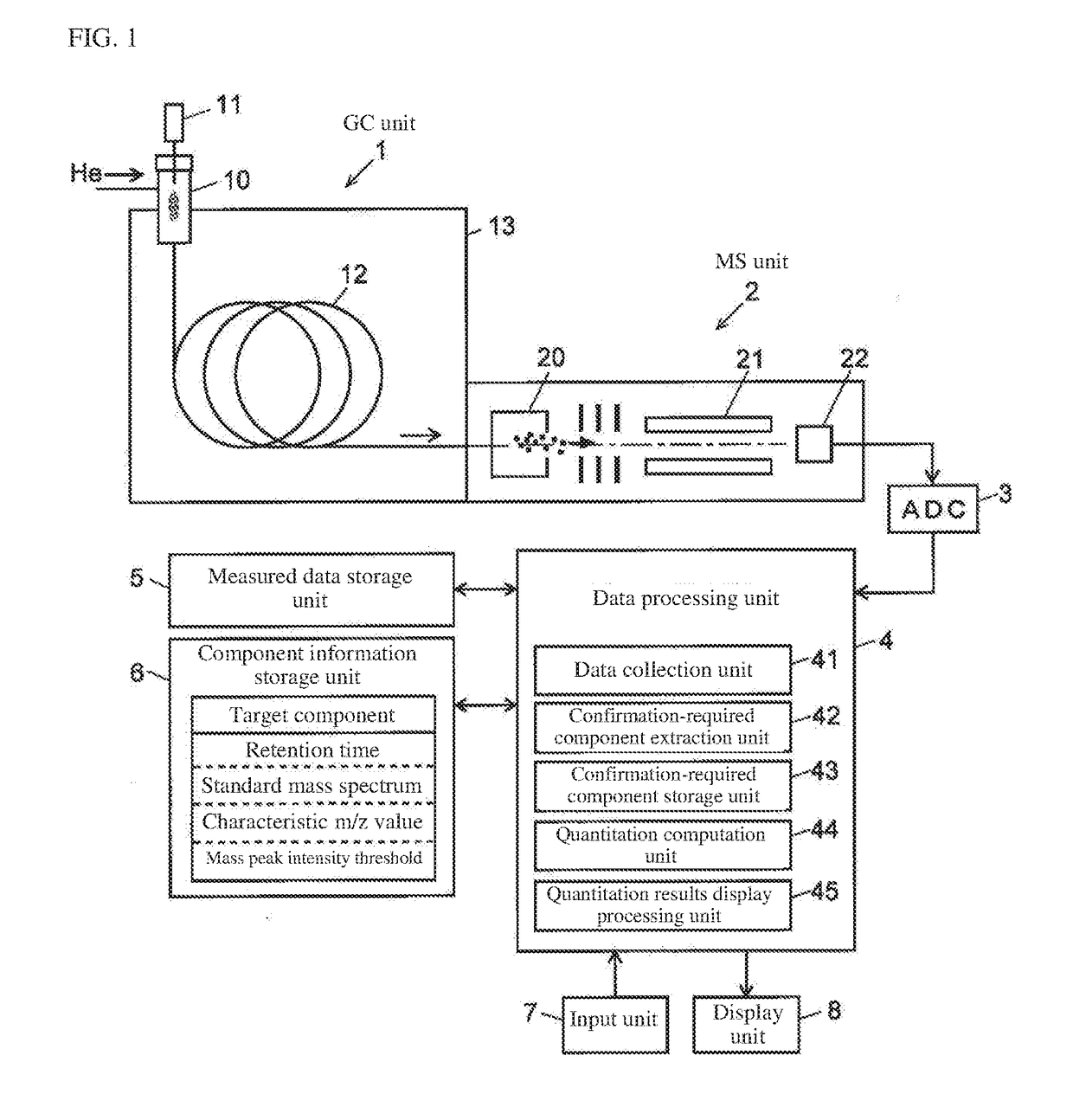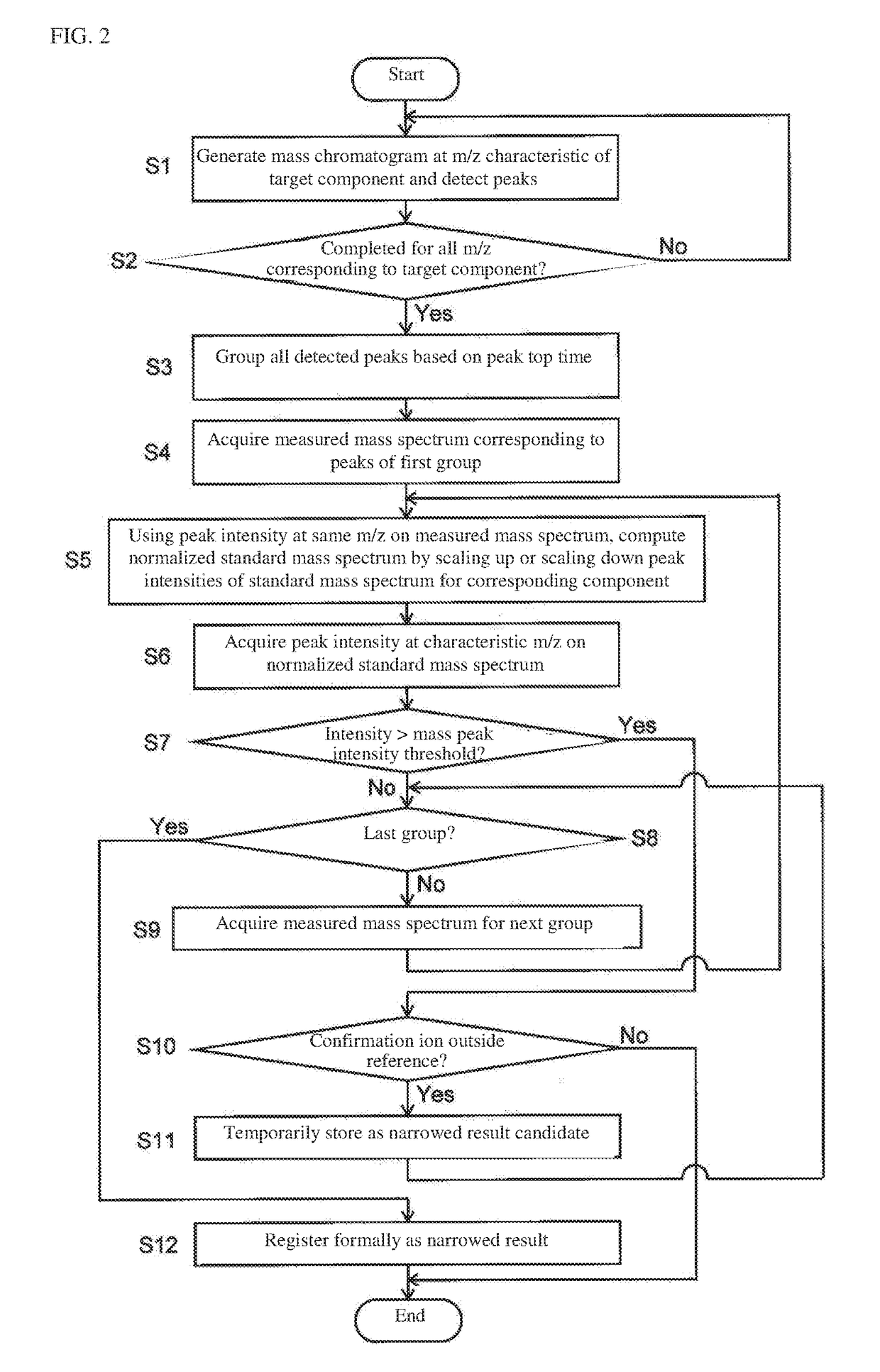Chromatography/mass spectrometry data processing device
a data processing device and mass spectrometry technology, applied in the direction of instruments, electric discharge tubes, particle separator tubes, etc., can solve the problems of inefficiency of conventional techniques described above, component peaks will affect the chromatogram peaks of target components, and the retention time of peaks originating from the target components to be incorrectly recognized, so as to reduce the burden on the operator involved in such confirmation operations. , the effect of accurately separating out components
- Summary
- Abstract
- Description
- Claims
- Application Information
AI Technical Summary
Benefits of technology
Problems solved by technology
Method used
Image
Examples
Embodiment Construction
[0050]An embodiment example of a GC-MS employing a chromatography / mass spectrometry data processing device according to the present invention will be described below with reference to the appended drawings.
[0051]The GC-MS of this embodiment example comprises a GC unit 1 including a sample gasification chamber 10, injector 11, column 12, and column oven 13 which houses the column 12, and an MS unit 2 including an ion source 20, quadrupole mass filter 21 and ion detector 22, with the detection signals generated by the ion detector 22 being converted to digital data in A / D converter 3 and inputted into data processing unit 4.
[0052]In the GC unit 1, a carrier gas such as helium is supplied through the sample gasification chamber 10 into the column 12 at a constant flow rate. Small amounts of sample are injected from the injector 11 into the sample gasification chamber 10 at a predetermined timing based on instructions from an unillustrated control unit, whereupon the sample is instantan...
PUM
| Property | Measurement | Unit |
|---|---|---|
| chromatography | aaaaa | aaaaa |
| mass spectrometry | aaaaa | aaaaa |
| mass spectrometer | aaaaa | aaaaa |
Abstract
Description
Claims
Application Information
 Login to View More
Login to View More - R&D
- Intellectual Property
- Life Sciences
- Materials
- Tech Scout
- Unparalleled Data Quality
- Higher Quality Content
- 60% Fewer Hallucinations
Browse by: Latest US Patents, China's latest patents, Technical Efficacy Thesaurus, Application Domain, Technology Topic, Popular Technical Reports.
© 2025 PatSnap. All rights reserved.Legal|Privacy policy|Modern Slavery Act Transparency Statement|Sitemap|About US| Contact US: help@patsnap.com



